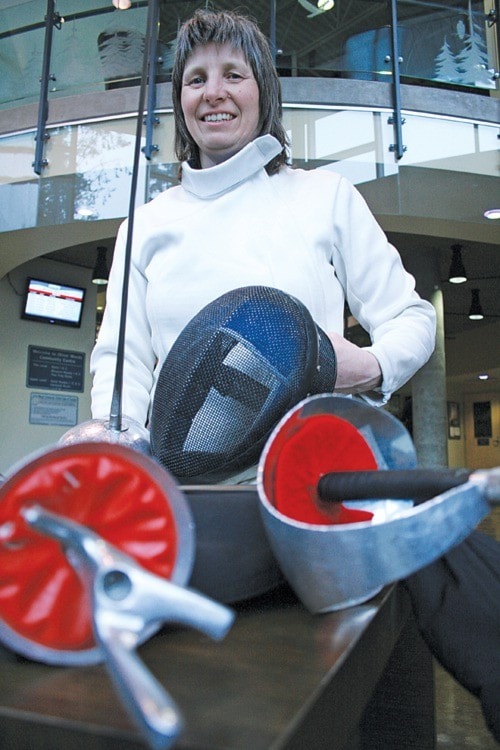The art of fencing is like chess on your feet.Will your opponent attack or will they wait for your approach, drawing you in to defend and strike quickly?
The combination of physical skill and mental calculations are some of the aspects that drew Georgia Newsome to the sport.
“It’s almost like a dance. It’s a conversation with another person, an opportunity to plan out strategies and to try to outwit the other person,” she said.
Fencing emerged from a time of chivalry and honour when men would duel. The tradition of saluting at the beginning of a bout and a handshake afterwards are remnants of those roots.
Newsome teaches the art through parks, recreation and culture classes. Students in the class, at Oliver Woods Community Centre, learn the basics of foil fencing, and in the later stages try their hand at sabre and Épée styles.
Newsome started fencing when she was 17, introduced to the sport while attending Brockenhurst College in the south of England. During physical education classes, each student had to try a variety of sports. Newsome looked down the list of sports and dismissed fencing as something she wouldn’t like. But as soon as she took it, she was hooked.
“Little did I know then that it would stick with me for so long,” she said.
After that came private lessons and soon she was competing in tournaments around England.
When she immigrated to Canada and settled in Vancouver in 1981, Newsome found few tournaments to compete at. Most tournaments are held on the East Coast, and at the time there were few fencing clubs in B.C. for competitions. After eight years in Canada she moved back to England, but returned again in 2006.
Newsome lives in Duncan and teaches fencing through her company, Salle La Fleche, which is named after a fencing move and means ‘room of the arrow’.
She enjoys seeing others fall in love with the sport she has enjoyed so long. When a student suddenly understands a move and isn’t flailing but developing more control in their movements, it makes her smile.
Fencers have a variety of equipment. The metal-mesh mask is important to protect the face and much of the clothing has specific stitching to ensure swords don’t go through. Fencers also wear all white when competing in bouts.
Newsome said that practice emerged before there was electrical scoring.
“They would put a piece of cotton wool on end of the sword soaked in ink and when the hit was made, it would show up on the white,” she said.
Fencing is a different kind of fitness than running a marathon. And while bouts only last about three minutes each, endurance is important.
For more information about adult fencing please call 250-756-5200 or check out the latest leisure guide.
